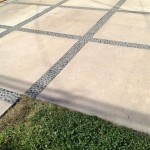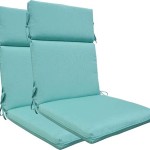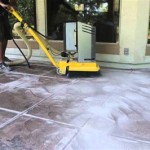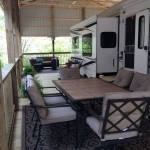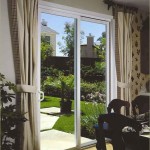Patio Heat and Shade Reviews: Selecting the Right Solutions for Outdoor Comfort
Creating a comfortable and inviting outdoor living space necessitates careful consideration of both heat and shade. Effective patio heating and shade solutions extend the usability of patios, decks, and other outdoor areas, making them enjoyable during a wider range of seasons and weather conditions. This article provides a comprehensive overview of various patio heat and shade options, offering insights to aid in making informed purchasing decisions based on specific needs and preferences.
Understanding Patio Heating Options
Patio heaters provide supplemental warmth, extending the outdoor season into cooler months. The types of patio heaters available vary in fuel source, heating capacity, and physical design. Choosing the right heater depends on the size of the patio, the desired level of warmth, and personal aesthetic preferences.
Gas Patio Heaters: Gas-powered patio heaters, typically fueled by propane or natural gas, are a common choice for outdoor heating. Propane heaters are portable, requiring only a propane tank for operation. Natural gas heaters, on the other hand, require a permanent gas line connection. Gas heaters are known for their relatively high heat output, making them suitable for larger patio areas. They come in various styles, including standing heaters, tabletop heaters, and wall-mounted heaters. Standing heaters often feature a reflector hood to direct heat downwards, maximizing efficiency. Tabletop heaters are smaller and are ideal for providing warmth to a smaller group seated around a table. Wall-mounted heaters offer a more permanent and space-saving solution.
Consumer reviews of gas patio heaters frequently focus on ease of assembly, heat output, and fuel consumption. Models with adjustable heat settings are generally preferred, as they allow users to customize the warmth level to their liking. Another important factor is the quality of the materials used in construction. Stainless steel or powder-coated finishes provide better resistance to rust and corrosion, ensuring a longer lifespan. Safety features, such as automatic shut-off mechanisms in case of tipping, are also important considerations.
Electric Patio Heaters: Electric patio heaters offer a cleaner and quieter alternative to gas heaters. They operate by converting electrical energy into radiant heat. Electric heaters do not produce any emissions, making them a more environmentally friendly option. Furthermore, because they don't require fuel tanks or gas lines, electric heaters tend to be lower maintenance than gas heaters. Electric heaters are available in radiant, infrared, and halogen models. Radiant heaters warm objects directly, rather than heating the air, making them less susceptible to wind. Infrared heaters emit heat through electromagnetic radiation, providing efficient and focused warmth. Halogen heaters use halogen lamps to produce heat and often have a bright, noticeable glow.
Reviews of electric patio heaters often highlight their ease of use and convenience. They typically require only plugging into a standard electrical outlet. Users often appreciate the instant heat provided by electric heaters. However, their heat output might be less than that of gas heaters, making them better suited for smaller patios or enclosed areas. When considering an electric patio heater, it is crucial to check the wattage and ensure that the electrical circuit can handle the load. Safety features, such as overheat protection and weatherproof construction, are particularly crucial when dealing with electrical appliances used outdoors.
Wood-Burning Fire Pits and Chimineas: Although technically not heaters in the same sense as gas and electric models, wood-burning fire pits and chimineas provide both warmth and ambiance. These options burn wood to generate heat, offering a traditional and aesthetically pleasing outdoor heating solution. Fire pits are typically open structures, while chimineas feature a vertical chimney to direct smoke upwards. Both options require sourcing and storing firewood, and they produce smoke, which may be a concern for some users.
Feedback on fire pits and chimineas often emphasizes their aesthetic appeal and social aspect. Gathering around a fire pit can create a cozy and communal atmosphere. Users should consider the size and design of the fire pit or chiminea to ensure it fits well with their patio layout. It is essential to consider local regulations regarding open fires, as some areas may have restrictions. Safety precautions, such as using a spark screen and keeping a safe distance from flammable materials, are vital when using wood-burning fire pits and chimineas.
Exploring Patio Shade Options
Patio shade solutions offer protection from the sun's harmful UV rays, creating a more comfortable and enjoyable outdoor experience. The choice of shade solution depends on the desired level of coverage, budget, and aesthetic considerations.
Patio Umbrellas: Patio umbrellas are a versatile and relatively inexpensive shade option. They come in various sizes, styles, and materials. Center-pole umbrellas feature a pole in the center, while cantilever umbrellas have an offset pole, allowing for unobstructed shade coverage. The canopy material is another important consideration. Polyester is a common choice, offering good durability and water resistance. Olefin fabrics are more resistant to fading and mildew. Features to consider include tilt mechanisms, which allow adjusting the umbrella angle to block the sun throughout the day, and wind vents, which help to prevent the umbrella from tipping over in windy conditions.
Customer reviews of patio umbrellas often focus on durability, ease of use, and wind resistance. Many appreciate umbrellas with sturdy frames and weather-resistant canopies that can withstand prolonged exposure to the elements. Some models include features like built-in LED lights for nighttime illumination. A heavy base is essential for ensuring stability, especially in windy conditions. Regular maintenance, such as cleaning the canopy and storing the umbrella during severe weather, can help to prolong its lifespan.
Awnings: Awnings are permanent or semi-permanent structures that provide shade and protection from the elements. They can be fixed or retractable, offering varying levels of control over shade coverage. Fixed awnings offer constant shade, while retractable awnings allow users to extend or retract the awning as needed. Awnings are typically made of durable fabrics, such as acrylic or vinyl, that are resistant to fading and mildew. They can be attached to the side of a house or building, providing shade over a patio or deck.
User feedback on awnings often highlights their ability to transform outdoor spaces into comfortable and usable areas. Retractable awnings are particularly popular, as they provide flexibility in adjusting the amount of shade. Professional installation is generally recommended to ensure proper attachment and operation. Regular cleaning and maintenance are essential to keeping the awning in good condition. Some consumers comment on the cost of awnings, but many believe the long-term benefits and increased usability of their outdoor space justify the investment. When selecting an awning, it is crucial to consider the size, style, and fabric to ensure it complements the architecture of the house and meets the specific shade requirements.
Shade Sails: Shade sails are fabric canopies that are suspended between multiple anchor points, creating a stylish and modern shade structure. They are typically made of durable, UV-resistant fabric, such as high-density polyethylene (HDPE). Shade sails come in various shapes, including triangles, squares, and rectangles. They can be arranged in different configurations to create unique and visually appealing shade patterns. Shade sails offer a flexible and customizable shade solution that can be adapted to various outdoor spaces.
Consumer experiences with shade sails often praise their aesthetic appeal and ease of installation. They are available in a range of colors and styles, allowing users to create a custom look for their patio. Proper installation is crucial for ensuring the shade sail provides adequate shade and remains secure in windy conditions. Reinforcing the anchor points and using high-quality hardware is essential. Shade sails require regular cleaning to remove dirt and debris. They are a cost-effective way to provide shade while adding visual interest to an outdoor space.
Key Considerations for Choosing Patio Heat and Shade
Selecting the right patio heat and shade solution involves considering several factors, including the size of the patio, the local climate, budget constraints, and personal preferences. A thorough assessment of these factors will help to narrow down the options and make an informed decision.
Size and Layout: The size and layout of the patio play a crucial role in determining the appropriate heating and shade solutions. Larger patios may require multiple heaters or a more powerful heating system to provide adequate warmth. Similarly, larger patios may benefit from multiple shade solutions, such as a combination of umbrellas and shade sails, to provide comprehensive shade coverage. The layout of the patio also influences the placement of heaters and shade structures. Consider the location of seating areas, walkways, and other features when planning the arrangement of heating and shade elements.
Climate and Weather Conditions: The local climate and weather conditions significantly impact the choice of patio heating and shade solutions. In areas with cold winters, a high-output gas heater or a wood-burning fire pit may be necessary to provide adequate warmth. In areas with hot, sunny summers, effective shade solutions, such as awnings or shade sails, are essential for creating a comfortable outdoor space. Windy conditions can affect the stability of patio umbrellas and the effectiveness of radiant heaters. Consider investing in wind-resistant umbrellas or electric heaters that are less susceptible to wind. The climate will also influence the material choices for both heating and shade solutions. Look for weather-resistant materials that can withstand the local climate conditions.
Budget and Maintenance: The budget is a major consideration when selecting patio heating and shade solutions. The cost of heaters and shade structures can vary widely depending on the type, size, and features. Consider the initial investment and ongoing operating costs, such as fuel or electricity, when comparing different options. Maintenance requirements should also be factored into the equation. Some heating and shade solutions require more maintenance than others. For example, wood-burning fire pits require regular cleaning and firewood sourcing, while electric heaters require minimal maintenance. Regular cleaning and maintenance can help to prolong the lifespan of heating and shade solutions, maximizing the investment.

Patio Heat And Shade Review 2025 Install Bromic Heaters On A Budget

The 5 Best Outdoor Patio Heaters Of 2025 Reviews By Wirecutter

Outdoor Patio Products Heaters Large Umbrellas On Sale Fire Pits More

The 5 Best Outdoor Patio Heaters Of 2025 Reviews By Wirecutter

Outdoor Patio Products Heaters Large Umbrellas On Sale Fire Pits More

Outdoor Patio Products Heaters Large Umbrellas On Sale Fire Pits More

The 5 Best Outdoor Patio Heaters Of 2025 Reviews By Wirecutter

Outdoor Patio Products Heaters Large Umbrellas On Sale Fire Pits More

Outdoor Patio Products Heaters Large Umbrellas On Sale Fire Pits More

How To Choose The Best Patio Heater Patioheatandshade

